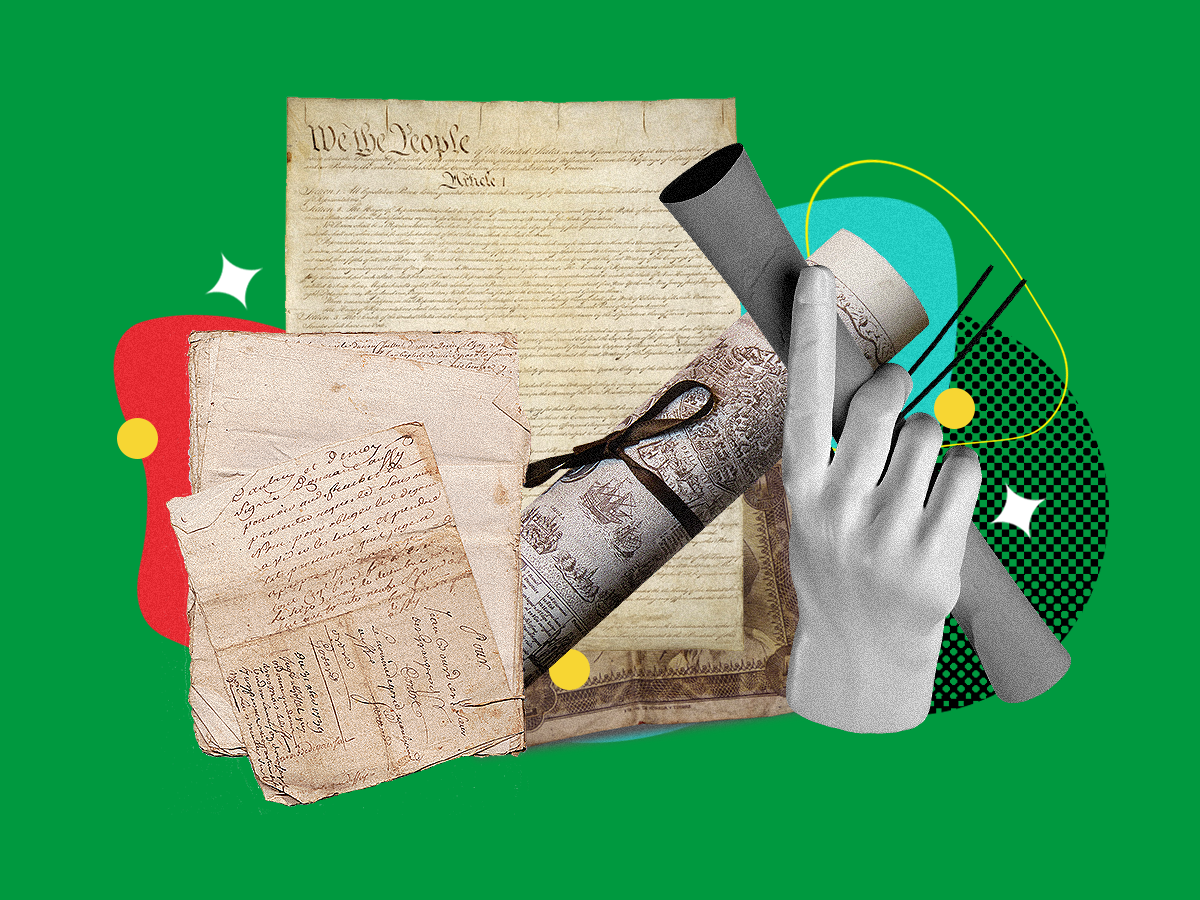National Treasures: How To Invest In Historical Manuscripts
Historic documents can tell us a lot about the past and are becoming an increasingly popular investment asset. But is investing in old paper worth it?

Historical documents can give us a lot of information about ourselves and the past. From the Declaration of Independence, which granted the U.S. independence, to the Magna Carta—the first document to talk about human rights—these thin pieces of paper have significantly impacted the world as we know it today.
Although many key documents remain in national archives and libraries…some investors are choosing to invest in these ancient artifacts.
And while these historic documents might not be secret maps that lead to ancient treasures, many are worth quite a fortune. That’s one reason relics like historical manuscripts, vintage concert tickets, and even dinosaur bones have become valuable alternative asset classes.
Get your library cards out as we dust off our old history books and find out everything we can about investing in historic documents.
The importance of historical documents
Paper, as we know it today, was invented in China in 105 AD. Before then, important documents took the forms of clay tablets, papyrus, and vellum (animal hides). It wasn’t until the printing press was invented in the 15th century that demand for paper made from wood and cotton pulp rose, although there’s evidence of paper registers and accounts being used by the 14th century in Western Europe.
Historians rely on manuscripts from the past to get an idea of what life was like. Besides essential documents like the Treaty of Versailles or the Emancipation Proclamation, lesser-known documents—such as handwritten letters from George Washington or the notebooks of Charles Darwin—can also give us a glimpse into the past. Legislative documents, court cases, literary works, pamphlets, scrapbooks, drawings, and more can capture a place and time before videos existed.

Source: rallyrd.com
Although many key documents remain in national archives and libraries or are being studied by historians at universities around the world, some investors are choosing to invest in these ancient artifacts.
Can you make money by investing in historical documents?
Historians and museums aren’t the only ones who buy old documents. History buffs and avid readers may also be collectors of rare manuscripts—some for a rather hefty price. Microsoft founder Bill Gates famously bought Leonardo da Vinci’s Codex Leicester for $30.8 million in 1994, making it the most expensive book ever sold.

Source: Wikimedia Commons
Documents can go for prices of tens or hundreds of thousands of dollars to even a few million, although it’s hard to measure the sector as a whole. An anti-slavery letter written by Abraham Lincoln fetched a record $3.4 million when it was auctioned by Sotheby’s in April 2008, while another Lincoln manuscript went for $3.1 million in March 2002.
A signed F. Scott Fitzgerald letter sold for $35,000 in October 2013 is now worth at least $52,500, while a collection of historical papers from the signers of the American constitution—including George Washington, Alexander Hamilton, and James Madison—will go for at least $150,000 at Heritage Auctions after it was purchased for $100,000 in June 2022. And a letter from Alexander Hamilton to James Madison sold for $113,850 in April 2021, surging past an estimated sale of just $10,000.
This goes to show that there’s a significant market for documents relating to American history.

Source: Heritage Auctions
Of course, the more well-known a figure—like George Washington or Leonard da Vinci—the higher something signed or written by them is likely to go for. Documents or pictures from lesser-known or ordinary people or those without autographs are likely to go for less, but that doesn’t mean they can’t gain value over the long term.
In general, alternative investments like historical documents serve better as long-term investments. Historical documents are illiquid, meaning they can’t easily be sold if you decide to realize your returns on the investment. This is one of the main obstacles to investing in documents and other historical collectibles.
Things to keep in mind when investing in manuscripts
If you’re interested in owning a piece of historical paper, there’s some information to keep in mind before beginning your search.
Use the right tools to protect your investments from accidents
Similar to other collectibles like fine wine, historical documents need to be protected from the elements. While a historic letter or poster might seem safe on your bookcase, it can be eaten by bookworms, destroyed by dampness and mold, or slowly fade from too much sunlight.
Any historical documents should ideally be kept in archival containers with any boxes, paper sleeves, or folders touching them to preserve quality. You should also take care when handling records, as oil from your fingers can damage delicate paper. Keeping your historical collection in a cool, dry, and dark environment can help ensure their preservation and potentially increase the price, as the better the condition of a document, the more it’s valued.

Source: rallyrd.com
Consider an appraisal
You may also want to get any historical collectibles you own appraised. That’ll give you an official estimate of the value of your documents, which you can also use to get your collection insured. And it helps you prepare an asking price if you want to sell it later.
If you’re buying a historical document, make sure it’s authentic from a reputable seller or auction house. Search for an officially appraised document to ensure it’s authentic.
Do your research and keep track of the market
While the market for historical documents may not move as quickly as the stock market, it’s crucial to stay on top of other similar items for sale. Understanding the market for historical collectibles can help you stay abreast of price movements, identify why they occur, and clue you in when particular types of documents are trending so you can keep tabs on potential investments.
Having sufficient knowledge in topics like American history, art, or science also helps identify opportunities to invest in historical collectibles.
How to invest in historical manuscripts
There are many options for investing in historical manuscripts, although you’ll likely want to do your research first and explore what type of documents you wish to buy and how much you want to invest. Like any investment, historical letters carry some risk, and many experts recommend that you never invest all your money in one asset class.
The primary way to buy historical documents is through auction houses like Sotheby’s, Christie’s, or Heritage Auctions. You can also expand your collection through resources like eBay and Etsy, although they’ll rarely be investment-grade.
Suppose you prefer to see documents before you invest in them. In that case, you can also search for historical documents in a specialized shop like a bookstore, especially in cities like New York. Just make sure to ask for additional information, such as any certifications or appraisals of the piece, to ensure the documents are genuine.

Source: rallyrd.com
Other investment options in historical documents include alternative asset investing platforms like Rally.
Rally lets you invest in historical documents and other collectibles like Star Wars action figures, famous comic books, and even Bored Ape NFTs. Rally’s experts source and verify collections from around the world that they expect to appreciate, like a handwritten and signed letter from Rasputin. These items are securitized and publicly offered to users who can buy fractional shares and diversify their portfolios.
